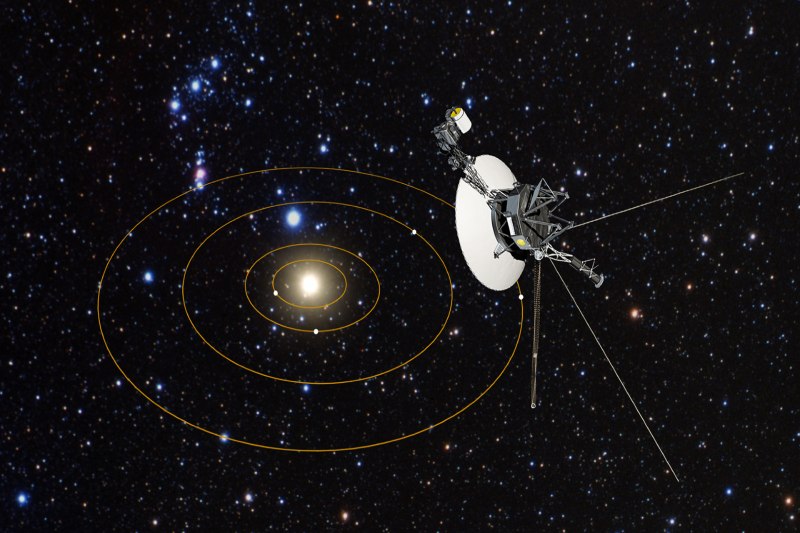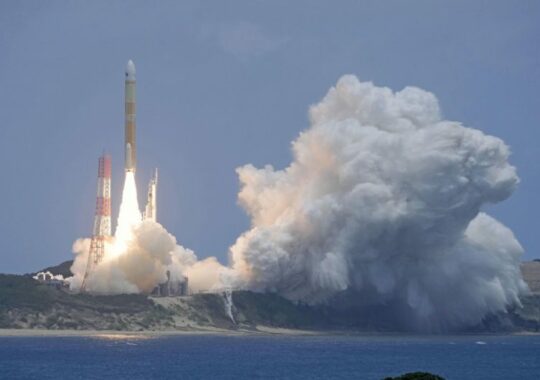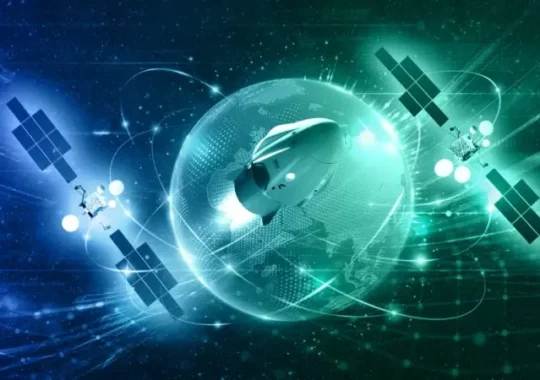A computer fault on NASA’s Voyager 1 spacecraft is resulting in a communication breakdown between the 46-year-old probe and its mission team on Earth.
While the aged spacecraft travels across unexplored cosmic territory along the farthest limits of the solar system, engineers are actively working to find a solution.
With a distance of almost 15 billion miles (24 billion kilometers), Voyager 1 is now the spacecraft that is the furthest from Earth, while Voyager 2, its twin, has traveled more than 12 billion miles (20 billion kilometers) beyond Earth. The only spacecraft to have ever operated outside of the sun’s heliosphere—a bubble of magnetic fields and particles that stretches well beyond Pluto’s orbit—are both in interstellar space.
The Voyager probes were originally intended to last five years, making them the two longest-running spacecraft in history. Due to their extraordinarily lengthy lifetimes, both spacecraft—which were initially intended to sail by Jupiter, Saturn, Uranus, and Neptune decades ago—have yielded new discoveries about our solar system and beyond.
But there have been difficulties throughout their rather long travels.
Three computers are installed on board Voyager 1, one of which is a flight data system that gathers data from the spacecraft’s scientific sensors and combines it with engineering data to show Voyager 1’s present state of health. That data is sent to mission control on Earth in binary code, which is just a string of ones and zeros.
However, it currently looks that Voyager 1’s flight data system is stuck on auto-repeat, evoking scenes from the movie “Groundhog Day.”
An extended-range error
When the flight data system’s telecoms unit started returning a repetitive sequence of ones and zeroes, as if it were stuck in a loop, the mission team initially became aware of the problem on November 14.
The spacecraft is still able to receive and execute directions from the mission team, but no science or engineering data from Voyager 1 is being returned to Earth due to a communications unit malfunction.
NASA reports that no useable data has returned despite the Voyager team’s requests to restart the flight data system over the weekend.
Before deciding on potential solutions, NASA engineers are presently attempting to learn more about the root cause of the problem, according to Calla Cofield, a public relations specialist at NASA’s Jet Propulsion Laboratory in Pasadena, California, which oversees the mission. The procedure could take many weeks.
Similar, though not identical, problems with the flight data system were previously encountered by Voyager 1 in 1981. According to Cofield, the current issue does not seem to be related to other malfunctions the spacecraft has encountered recently.
The only manuals available to the mission team as the two Voyager probes undergo additional testing are the original ones, which were written decades ago, and they are unable to predict the difficulties the spacecraft will encounter as they get older.
Before giving the spacecraft more directives, the Voyager crew wants to make sure that all possible outcomes are taken into account to ensure that its operations are not affected in an unanticipated way.
Due to its great distance from Earth, Voyager 1 requires 22.5 hours to receive directives. The team also has to wait forty-five hours for a response.
Sustaining the Voyager probes
According to an earlier CNN report, Voyager’s project manager Suzanne Dodd stated that in order to save energy and prolong their missions, the team has gradually shut off instrumentation on the elderly twin Voyager probes as they continue their cosmic exploration.
Both spacecraft have experienced unanticipated problems and dropouts along the route, including a seven-month gap in 2020 when Voyager 2 was unable to contact Earth. The mission team had to employ a long-shot “shout” method in August to get back in contact with Voyager 2, as a command had unintentionally turned the spacecraft’s antenna in the wrong direction.
The primary benefit of the mission is its extended lifespan, according to Cofield, even though the team aims to resume the consistent flow of data returned by Voyager 1. For instance, when the probes travel further away from the heliosphere, scientists hope to observe changes in particles and magnetic fields. But if Voyager 1 is unable to return data as it goes on, that dataset will be lacking.
The mission team has been able to sustain its record-breaking flights in recent years by coming up with inventive ways to increase the power supply on both spacecraft.
According to Cofield, “The Voyagers are performing longer and farther beyond their prime missions than any other spacecraft in history.” Therefore, even though the technical staff is putting a lot of effort into keeping them alive, problems are inevitable.





